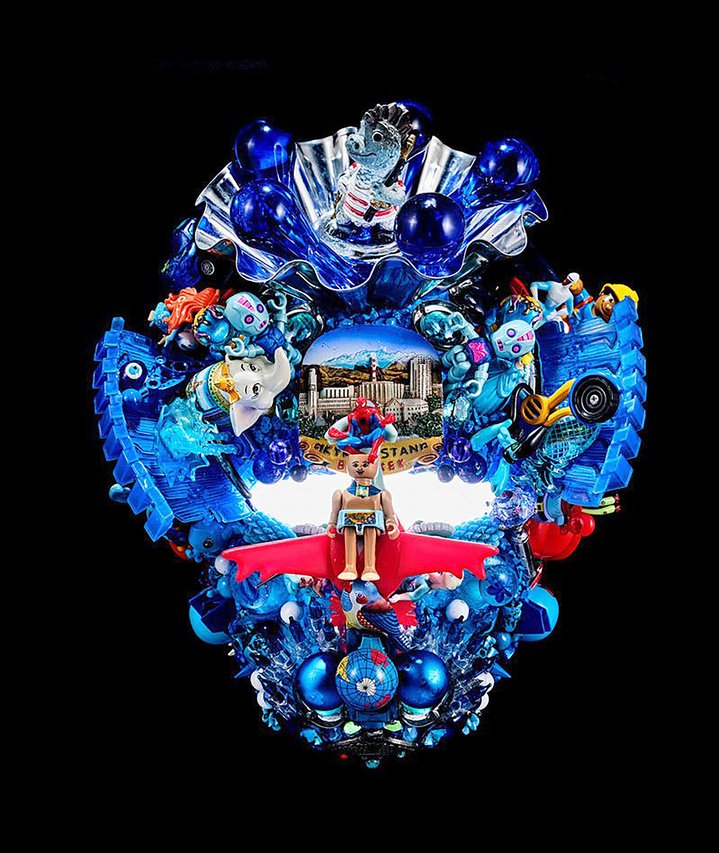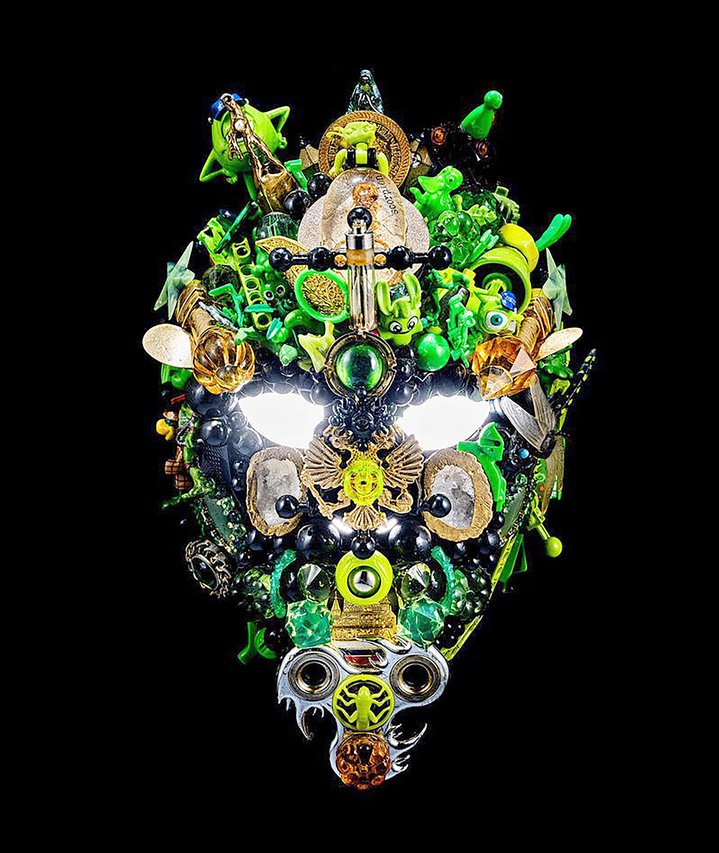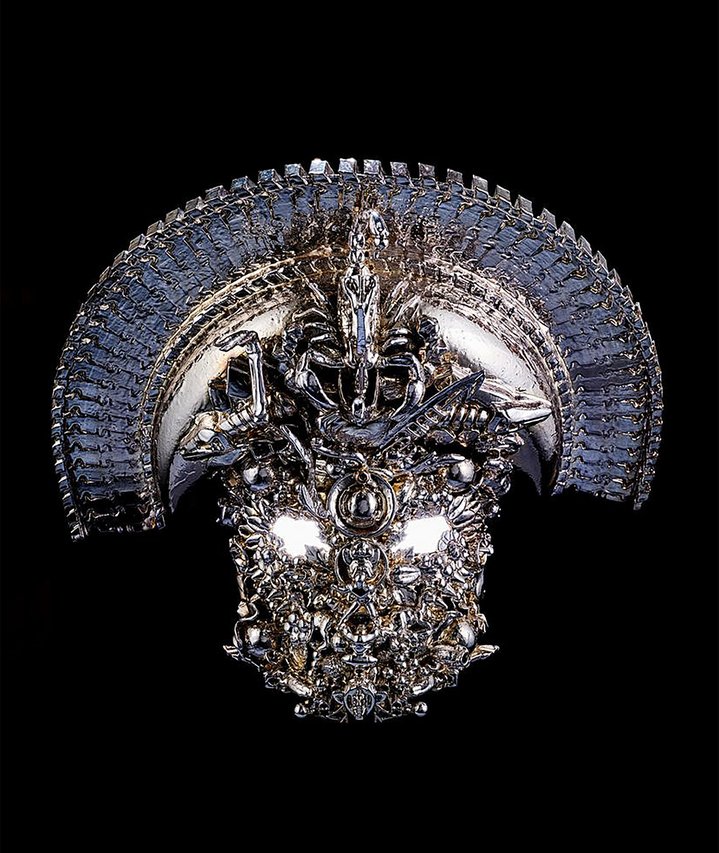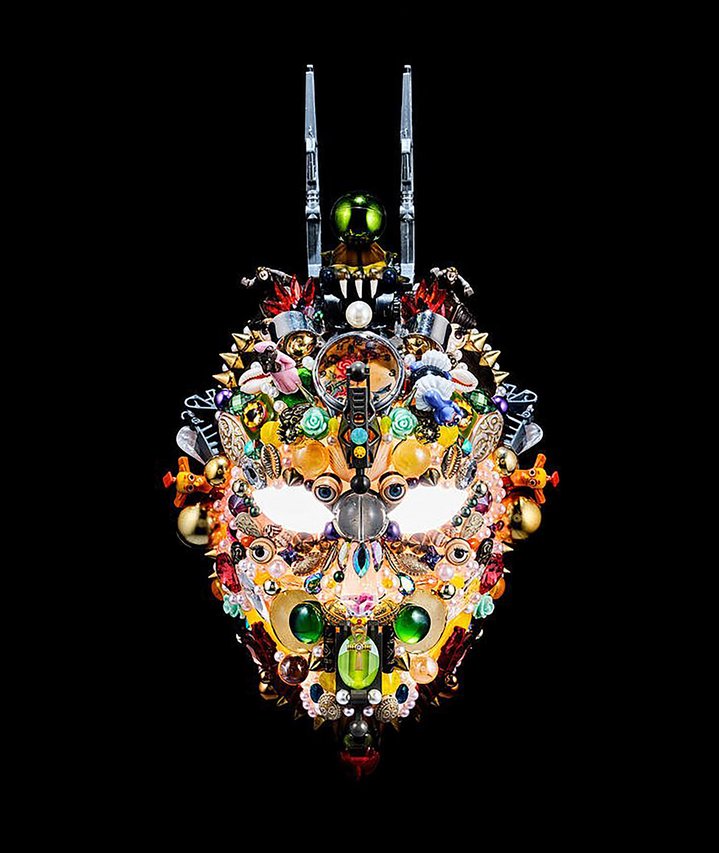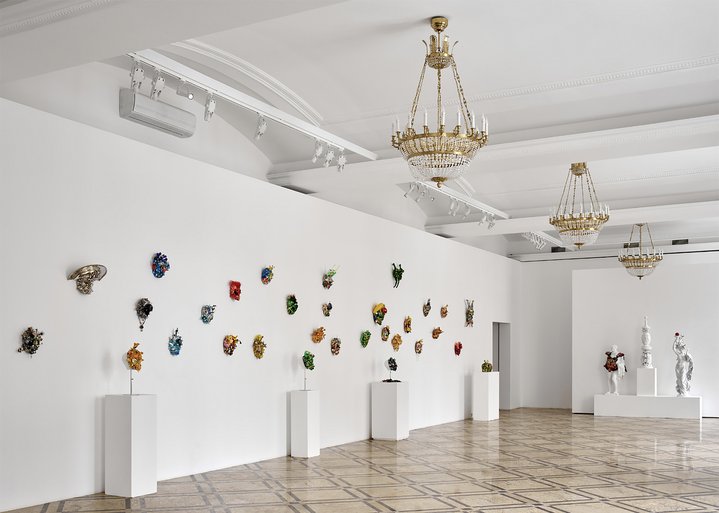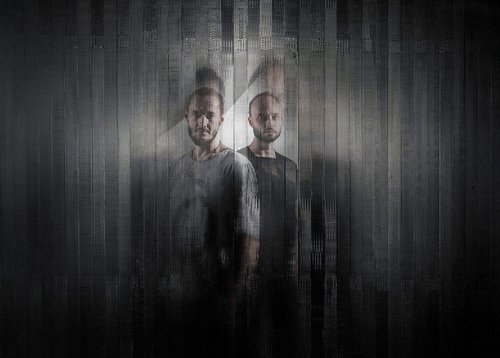Shabalin as a Knight of Order and Master of Chaos

A millennial Russian artist who has given the medium of assemblage an unusual, new dimension, has opened an exhibition called ´Pantheon´ in Moscow where he is showing work made over the past decade which perfectly fits with the festive mood of Christmas and the New Year.
When you meet Dima Shabalin (b. 1993) for an interview, never go empty-handed. I brought him a broken fake pearl choker, some old strings of beads and a seashell. “I will make a mask around the shell,” he said enthusiastically. This cryptic phrase describes his creative method well. Like Giuseppe Arcimboldo, Shabalin assembles a human face out of a weird assortment of random objects.
Technically, the process looks deceptively easy: he glues small toys and household junk onto ready-made plastic masks. If you look at these boisterous creations closely, there is always a centrepiece, such as a pair of oddly shaped eyeglasses, a Central American ritual Tumi knife. These are often things he has been given from others. “I consider them offerings,” the artist puts it. For him a mask is a ritualistic object as it is in numerous cultures, something he always reminds his audience. Each work of art is a microcosm in itself where beads, Swarovski crystals, vintage Soviet badges, small plastic toys and plumbing fixtures co-exist in otherworldly harmony.
It was ten years ago that Shabalin came up with his first mask. A native of Berezniki, a small town in Russia´s Perm region, he went to Moscow to study, where he briefly attended the journalism faculty of Moscow State University and for a time trained as an artist at the Institute for Contemporary Art. He did not graduate from either leaving his studies before the end of the curriculum. A moment of truth came when he was working as a fashion editor for a now defunct glossy magazine. It was, as he told me, during a fashion show at Maison Martin Margiela in Paris that he had his idea, where he was fixated by the richly decorated masks the models were wearing. “It was like an electric shock,” he recalls. He went on to make his own mask creations. For his first mask, he used his own toys with childhood memories, as his parents had wanted to get rid of them and he was reluctant to discard them. This unique capacity of a tiny, insignificant object to unlock a secret door into a person’s past is important for him. It is the energy of the emotions of its previous owners and their memories that he cherishes and wants to preserve when he saves small objects from perishing in the garbage bin. He enjoys it when visitors spot familiar things in his works: “Somebody always exclaims ´I had one of those when I was a kid!´”. He explains, “They may have already thrown this thing away, but when they suddenly see it out of its mundane context, it invokes strong feelings in them.” Indeed, there is the miracle of coming face to face with one’s childhood that can happen over and over again. In his latest solo show ´Pantheon´ at Vladey, there is a pair of familiar Soviet Christmas lights and an Oktyabrenok’s star with a portrait of Lenin as a baby like one I used to wear at elementary school (Oktyabryata was a pre-teen division of Young Pioneers in the USSR).
´Pantheon´ consists of Shabalin’s works made over the past decade, during which his method has essentially remained the same with some technical developments. He started using galvanic chromium coating, which makes the surface of the masks shiny and monochromatic, where single objects are barely discernible. Some of his creations are displayed hanging on the walls of the exhibition space, while others adorn plaster casts of classical Ancient Greek and Roman statues. For Shabalin, each mask is a character with its own personality. They are not designed for wearing, he prefers them to be hung on the wall just above eye level, so they would stare at people passing by, going about their daily business. Impassionately from above, with their empty eyes. Some call his style ´space baroque´, and you can see influences from popular culture, of Luc Besson’s films and Moebius’s comics.
Shabalin sometimes designs masks for the theatre, and at the opening of the exhibition, a countertenor was singing arias wearing one of his creations. However, they barely fit into somebody else’s imaginary universe, as each mask is a tiny universe teeming with life itself, where objects enter into absurd, often humorous relationships. “For example, this mask is a flight over a tropical forest, there is a plane and some dinosaurs and lizards swarming underneath”, he explains deadpan. Each mask is unique, for the simple reason that exactly the same set of objects would be impossible to find again. Making these objects work together is always a challenge, a feat of ingenuity – sometimes Shabalin assembles a mask in just a few hours, while others take months to finish. “I am a knight of order and a master of chaos”, he says.







